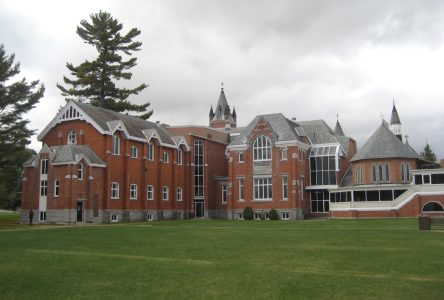They arrive together every spring, like the daffodils and crocus. This year, Good Friday and the first day of Passover fall on the same day. Both holidays face head-on the disconcerting power of death. Both celebrate rebirth, and hope.
On the economic front this year, there’s plenty to give us pause – the existential threats to life as we’ve known it are more striking than they have been in years.
The need to reduce our reliance on fossil fuels has been hotly debated for decades before COVID. While the debates have ebbed and flowed, extreme weather events have increased a lot. According to the third volume of the Intergovernmental Panel on Climate Change (IPCC) released last week, the window to meet UN climate targets is vanishing. To have a 50 per cent chance of meeting the goals, global greenhouse-gas emissions will have to peak in the next three years, by 2025. The use of fossil fuels needs to be phased down at warp speed. The IPCC reports that while there are solutions – reviving nuclear power is one — countries using coal and oil want to continue to use them — the arguments continue.
While COVID seems to be slowly releasing its grip on society, it has left permanent scars. All our historical data regarding labor markets, trade, money supply – the things we look at to gauge the health of the economy — has been distorted by more than two years of unprecedented measures taken to counteract the devastation of country lockdown. Inflation is a direct result of billions of dollars pumped into the economy to prevent it from collapsing. It’s aggravated by supply shortages brought on first by rolling Covid lockdowns and now by the Russia-Ukraine war.
Central banks can slow or stop inflation by raising interest rates. Because of the COVID distortions and worries about causing unemployment, they have been slow to act. Inflation becomes embedded when consumers think they better buy now before prices go up more. Quick action by central banks will cause pain both to financial markets and workers/consumers. There are no guarantees the desired effects will follow. The economy was slowing two years ago. There are many mumbo-jumbo economic indicators – quite reliable in the past — that suggest recession might be on the way — the dreaded “stagflation”.
Then there is the issue of tight labor markets. It has been known since the 1960s that when the Baby Boomers left the work force, there would be labor shortages. Welcoming immigrants is the countermeasure to low birth rates. COVID stopped that cold. In 2020, Canada had the lowest population growth rate in a century – up only 0.4 per cent. And that was the best growth of all the G-7 countries!
In addition, the 2020 shock of losing one’s livelihood and having to pivot to survive has changed the way Canadian workers, from CEOs to professionals to trades people, think about the balance between their work and their personal lives. In times gone by, workers were viewed as just one factor of production, along with land and capital. And because workers were plentiful and capital was not, they were not treated as a very important factor. Flexible work arrangements are now mainstream and the traditional employment model is in question. New attitudes and accommodations are needed.
On the eve of Easter and Passover, we have much to do. We are now free of the harsh confinement of both winter and COVID restrictions. The new season promises soft air, new buds, the resurgence of life and the hope that we can find better and more lasting solutions for troubles that often seem intractable.
Dian Cohen, C.M., O.M., economist cohendian560@gmail.com





